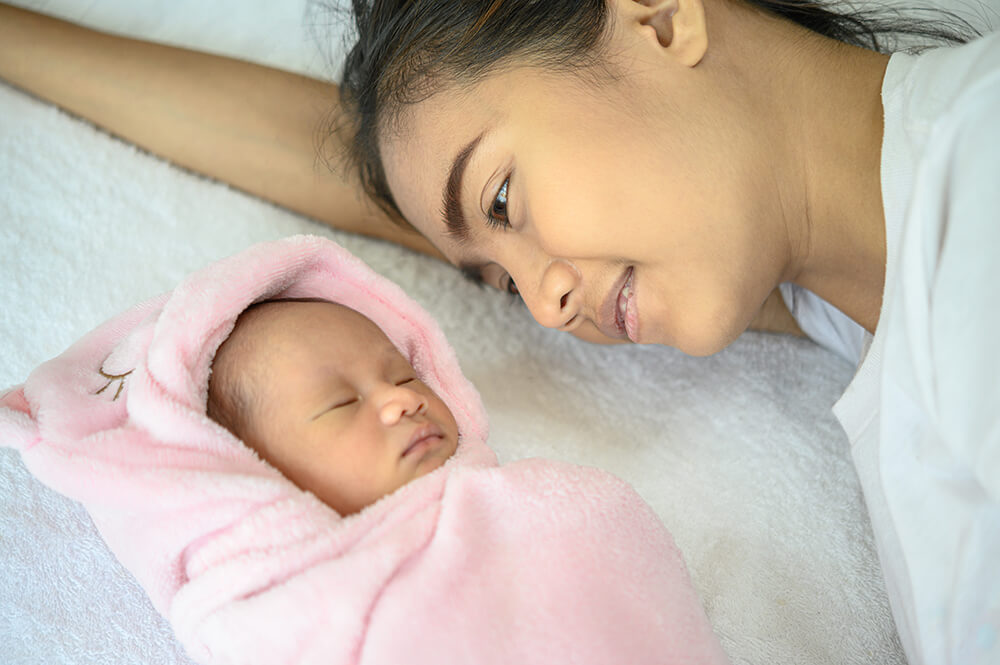Experiencing groin pain after a cesarean section (or C-section) can be alarming. Pain around the pelvis or groin can add to other symptoms such as aches and swelling that you may already be experiencing after giving birth. While C-sections are generally safe procedures, complications and negative side effects like groin pain can sometimes arise. In addition to groin pain, lower back pain is also common after a C-section. Fortunately, treatment is available. Physical therapy can be a great resource when it comes to addressing groin pain. A physical therapist can help identify the source of your pain and offer specialized treatments to address it.
Wondering what might be causing your pain? Groin pain after a C-section can arise for many different reasons. The best solution for your pain will depend on why you are experiencing it. Some causes simply require rest while others may need professional treatment. Learning more about common causes of post-surgery pain can help you get a better understanding of your condition.
Common reasons for groin pain after a C-section
- Incision pain — The surgical incision made during a C-section can lead to pain after the procedure. As the incision heals, you may experience localized pain around the site of the surgery. The incision typically extends from around the belly button into the upper part of the groin area. If you are experiencing persistent groin pain in the period following your surgery, it could be a lingering symptom of the incision. To address incision pain, it is important to follow postoperative care instructions. Instructions from your surgeon may include guidance on proper wound care and pain management. As your recovery progresses, physical therapy can help you manage your pain and accelerate your healing.
- Infection — When it comes to surgery, infections are a relatively common complication. There are a few signs to look for if you think your incision site might be infected. First, look for visible indicators like swelling and discoloration. The skin around your incision may show redness. You might also notice discharges of pus. Other key signs of an infection are symptoms like groin pain, increased discomfort and fever. While some pain after surgery is standard, your pain should diminish as time goes on. An increase in aches and pains around the groin can indicate that something is wrong. If you notice any of these signs after your C-section, it is important to seek treatment.
- Muscle strain — A muscle strain occurs when a muscle is stretched too far or torn. Strains are often the result of continual overuse or a sudden high-impact injury. Surgeries like C-sections can also lead to muscle strain. While the operation itself may not cause the strain, it can make some of your muscles more vulnerable to straining. Straining a muscle after your C-section can cause symptoms including stiffness and groin pain. The strain can also hinder your recovery progress. Physical therapy can help address your strain with specialized manual therapy techniques. Gentle focused exercises can be helpful as well. These treatments are intended to alleviate tension and promote healing, treating the source of your pain.
- Nerve compression — Nerves in the pelvic area may be susceptible to compression during and after surgery. Nerve compression happens when other tissue presses against a nerve and limits its ability to function. If you have a compressed nerve, you may experience a range of symptoms including numbness, tingling and pain. Targeted PT stretching exercises can be one helpful way to alleviate nerve compression. Your physical therapist can work with you to develop an exercise routine that meets your needs. Another beneficial PT method is posture education. Posture education is meant to help patients relieve pressure on areas affected by issues like nerve compression. This can make it a great addition to your treatment plan.
- Scar tissue — The development of scar tissue after a C-section is normal. If excess scar tissue forms, though, it can lead to symptoms including groin pain. Dense scar tissue can also limit your range of motion around your hips and abdomen. When excess scar tissue starts to cause further issues, treatment is crucial. Your physical therapist can apply a range of treatments to manage your symptoms. With treatments like instrument-assisted soft tissue mobilization (IASTM), your physical therapist can also help you find lasting relief. A central function of IASTM is breaking up scar tissue. By addressing the buildup of scar tissue, IASTM can reduce stiffness and improve circulation around your incision site.
Address the groin pain after your C-section at Continuum Wellness
Ready to find a solution to your discomfort? Continuum Wellness is here to help. Our team is committed to delivering effective care tailored to each individual patient. With specialized women’s health-oriented treatments, we can help you find relief and recover from your delivery.
Call us or request an appointment today to address groin pain after your C-section.

